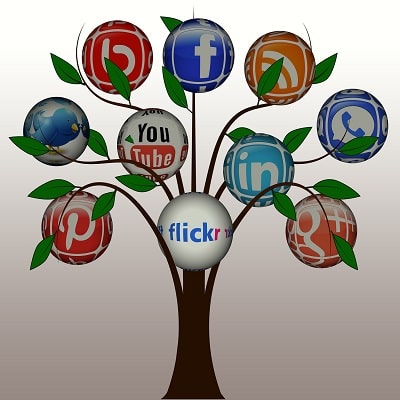Social media: the history of its emergence

The advent of social platforms has changed the lives of many people. From connecting with people from all over the world to viewing informative photo and video content, they have opened up a world of possibilities. Find out who discovered this new world for users, and how it happened.
How it all began
The term “social networking” originated back in the 1950s. Of course, back then, it had a very different meaning, having nothing to do with the Internet. The latter came much later, in the late ’60s. But the essence of the term reflects what we are dealing with today. A social network has been described as a structure of several nodes – people or companies – and the links that are formed between them.
On the Internet, similar structures of communication emerged in the 1970s. The first conditional social network, which worked thanks to a computer, was developed for the needs of the military. It was used to transmit information.

Much later, in the late ’80s, IRC, an Internet Relay Chat protocol, was developed along with the software to support it. It was then that the possibility emerged for people to communicate online in the virtual world.
But mass use of this technology began only in the mid-1990s. In 1995, in the United States, the first social network as we know it today was created. It was the resource Classmates.com, which after registration opened access to the directory of graduates of educational institutions. It became instantly popular and is still relevant today (over 50 million users).
History of the top social networking sites
Facebook, the world’s leading social network, was founded in 2004. In its formative stages, the social platform was aimed at Harvard graduates. Then it was joined by students from Boston and, afterwards, by everyone in the United States. Two years later, Facebook opened its “doors” to users from all over the world aged 16 and up. Now, the social network has a monthly audience of almost 2 billion people.
Twitter’s history also began in 2006. It was developed for internal use, for communication between employees within the company itself. But almost immediately the service was opened up to public short messaging. The social platform now has more than 300 million users.
In 2010, the history of Instagram began. It was immediately conceived as a social network for sharing photos and videos. Admittedly, the idea was for users to geo-tag first, so subscribers would know where their friends were and what they were up to. But statistics showed that people are more interested in sharing photos. With this in mind, the creators of the project eliminated all other options, leaving photo sharing as the main one. This led to an unprecedented growth in popularity. Today, the platform has more than 200 million active users.
